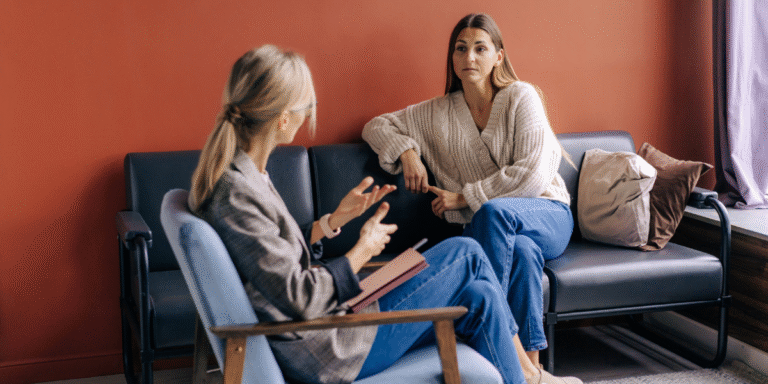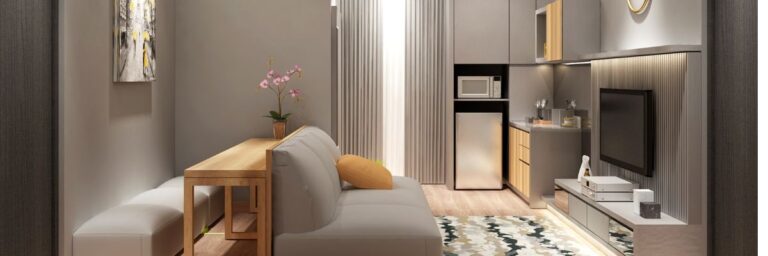Women’s Business Casual: The Ultimate Guide to Professional Yet Comfortable Workwear
When it comes to workplace attire, one of the most popular dress codes that strikes a balance between professional and comfortable is the “business casual” dress code. This term is commonly used across various industries, but it often leaves people wondering: what does it actually mean? Especially for women, the line between what is considered casual and what is considered professional can be a bit blurred. In this guide, we’ll explore women’s business casual attire, offering tips on how to create the perfect look for any workplace environment.
What Is Business Casual for Women?
Business casual attire is a dress code that allows women to express their personality while maintaining a level of professionalism. It generally excludes clothing that is too formal, such as suits or dresses meant for formal events, and instead promotes a more relaxed yet polished appearance. Think smart trousers, blouses, and dresses that look professional but feel comfortable enough for a day of work. Business casual is ideal for office settings that encourage a more relaxed atmosphere without compromising on professionalism.
The Key Elements of Women’s Business Casual Attire
While the definition of business casual may vary slightly depending on the company, there are some universal guidelines to follow. Here’s a breakdown of what you can and can’t wear in a business casual environment:
1. Tops and Blouses
Tops in a business casual setting should be neat and well-fitted. Avoid overly casual t-shirts or tank tops, as they do not present the level of professionalism required. Opt for button-down shirts, blouses, or knit tops made of high-quality fabrics like cotton, silk, or jersey. A crisp white blouse, a patterned blouse, or a lightweight sweater can elevate the look, making it both stylish and suitable for work.
Colors like navy, grey, or pastels work well in business casual attire, while bold or flashy colors should be kept to a minimum. When in doubt, classic patterns such as stripes, plaid, or small floral prints can keep the look sophisticated while still allowing for a bit of fun in your outfit.
2. Pants and Skirts
For women, the options for business casual pants and skirts are varied. Straight-leg trousers, chinos, or dress pants are all excellent options. Avoid denim, leggings, or overly tight pants, as they are often considered too casual for a business setting. Instead, go for tailored pants that create a clean, structured look.
If you prefer skirts, choose pencil skirts or A-line skirts that hit just above or below the knee. Skirts should not be too short, and make sure they’re not too tight, as these can be distracting or uncomfortable in a professional environment.
3. Dresses
Dresses are a great option for business casual attire as long as they are not too casual or revealing. Opt for dresses with a knee-length hemline and avoid those that are too short or too tight. Sheath dresses, fit-and-flare dresses, or wrap dresses made of professional fabrics like cotton, wool, or blended materials are ideal choices. For a more polished look, pair dresses with a blazer or cardigan.
4. Footwear
Footwear in a business casual setting should be both professional and comfortable. Closed-toe shoes are generally a safe bet, whether you choose flats, heels, or loafers. Pointed-toe flats or a pair of low-heeled pumps are perfect choices. Avoid flip-flops, sneakers, or sandals with casual elements like embellishments or open toes, as they tend to look too informal in a work setting.
When it comes to shoes, consider classic styles that offer versatility and comfort, as you may need to move around or stand for long periods of time throughout the day. Black, nude, and brown are classic colors that will match most outfits.
5. Outerwear and Blazers
When it comes to outerwear, a blazer is often the most versatile and polished option to complete your business casual look. Blazers should be well-fitted, not too oversized, and made of fabrics such as wool, cotton, or blended materials that look sharp without appearing too formal. A neutral-colored blazer in black, navy, grey, or beige can easily be paired with any outfit to add structure and professionalism.
If the weather is warmer, a cardigan or light jacket can be a suitable alternative to a blazer, offering a comfortable yet chic addition to your attire.
What to Avoid in Women’s Business Casual Attire
While it’s helpful to know what to wear, it’s just as important to be aware of what to avoid. Business casual attire is about finding that middle ground between too casual and too formal. Here are some items that should generally be avoided:
- Denim: While jeans can be part of a business casual wardrobe, they should be avoided in more formal business casual settings. Opt for tailored trousers or skirts instead.
- Revealing Clothing: Avoid clothing that is too tight, low-cut, or too short. Aim for a professional, polished look.
- Flip-flops and Casual Footwear: Casual footwear such as flip-flops, sneakers, or sandals should be avoided in most business casual settings.
- Excessive Accessories: Keep accessories minimal and elegant. Avoid wearing chunky jewelry or accessories that could be distracting in the workplace.
Business Casual: A Versatile and Stylish Approach
Women’s business casual attire offers a perfect blend of comfort and professionalism. Whether you’re dressing for an office job, a meeting, or an event, you’ll find that the right mix of tailored pieces, thoughtful accessories, and comfortable footwear will ensure you look polished and confident. The key is to keep the balance between businesslike formality and relaxed elegance, allowing you to feel comfortable and look put-together no matter what your day holds.
Final Thoughts
Ultimately, business casual attire is about making smart and professional fashion choices that still allow for personal style. By following the guidelines outlined above, you’ll be able to navigate the business casual dress code confidently and effortlessly. Remember, each office has its own definition of business casual, so always observe the culture and adjust accordingly. With the right pieces in your wardrobe, you can achieve a stylish, practical, and professional look for any workday!




